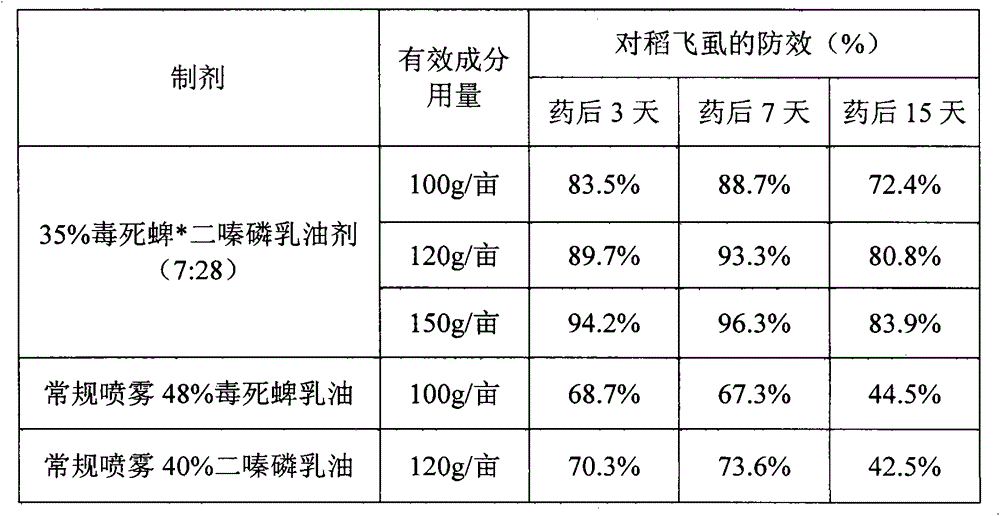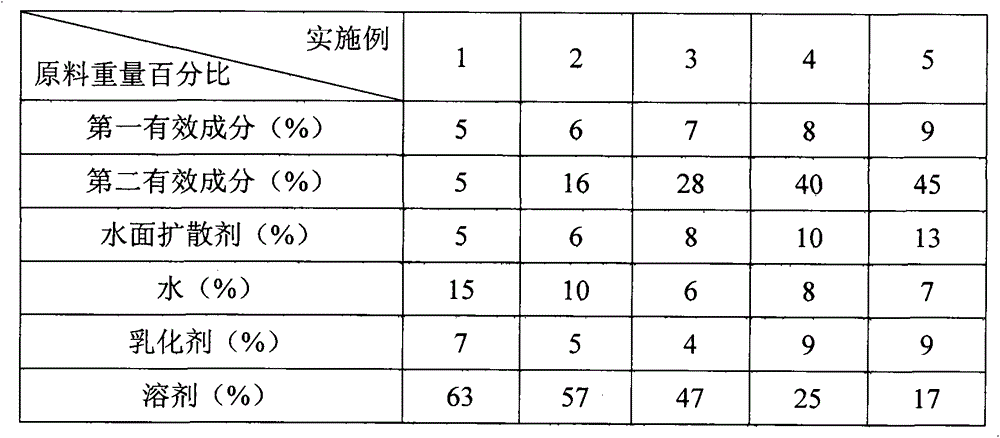A film spreading oil agent for controlling rice planthopper
A film-spreading oil agent and rice planthopper technology, applied in the field of pesticides, can solve the problems of ineffective control of rice planthoppers, difficulty in resistance, long-lasting effect, etc., to save agricultural production costs, not easy to produce resistance, long-lasting effect
- Summary
- Abstract
- Description
- Claims
- Application Information
AI Technical Summary
Problems solved by technology
Method used
Image
Examples
Embodiment Construction
[0015] A film-spreading oil for preventing and treating rice planthoppers. The film-spreading oil is prepared by adding a water surface diffusing agent into the active ingredients and by means of traditional techniques. The key is: each group of the film-spreading oil According to the percentage by weight, it includes: active ingredients account for 10-60%, additives account for 3-85%, fillers account for 0-70%, water surface diffusing agent accounts for 5-14%, water accounts for 0-15%, and the active ingredient is chlorpyrifos , diazinon, dichlorvos, imidacloprid, thiamethoxam, clothianidin, thiacloprid, thiazoprid, nitenpyram, dinotefuran, pymetrozine, isoprocarb, secbucarb, medicarb, mixed One of dicarb, sulfoxaflor, and flonicamid, or a combination of any two of them, in the case of two combinations, the weight ratio of the two active ingredients is (1:10)~(10: 1).
[0016] The dosage form of the film spreading oil is emulsifiable concentrate, or water emulsion, or oil su...
PUM
 Login to View More
Login to View More Abstract
Description
Claims
Application Information
 Login to View More
Login to View More - R&D
- Intellectual Property
- Life Sciences
- Materials
- Tech Scout
- Unparalleled Data Quality
- Higher Quality Content
- 60% Fewer Hallucinations
Browse by: Latest US Patents, China's latest patents, Technical Efficacy Thesaurus, Application Domain, Technology Topic, Popular Technical Reports.
© 2025 PatSnap. All rights reserved.Legal|Privacy policy|Modern Slavery Act Transparency Statement|Sitemap|About US| Contact US: help@patsnap.com



